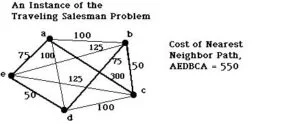In computer science, artificial intelligence, and mathematical optimization, a heuristic is a technique designed for solving a problem more quickly when classic methods are too slow, or for finding an approximate solution when classic methods fail to find any exact solution. This is achieved by trading optimality, completeness, accuracy, or precision for speed. In a way, it can be considered a shortcut.
A heuristic function, also called simply a heuristic, is a function that ranks alternatives in search algorithms at each branching step based on available information to decide which branch to follow. For example, it may approximate the exact solution
Heuristic search is an AI search technique that employs heuristic for its moves. Heuristic is a rule of thumb that probably leads to a solution. Heuristics play a major role in search strategies because of exponential nature of the most problems. Heuristics help to reduce the number of alternatives from an exponential number to a polynomial number. In Artificial Intelligence, heuristic search has a general meaning, and a more specialized technical meaning. In a general sense, the term heuristic is used for any advice that is often effective, but is not guaranteed to work in every case. Within the heuristic search architecture, however, the term heuristic usually refers to the special case of a heuristic evaluation function.
Complexity of Finding Optimal Solutions:
The time complexity of a heuristic search algorithm depends on the accuracy of the heuristic function. For example, if the heuristic evaluation function is an exact estimator, then A* search algorithm runs in linear time, expanding only those nodes on an optimal solution path. Conversely, with a heuristic that returns zero everywhere, A* algorithm becomes uniform-cost search, which has exponential complexity.
In general, the time complexity of A* search and IDA* search is an exponential function of the error in the heuristic function. For example, if the heuristic has constant absolute error, meaning that it never underestimates by more than a constant amount regardless of the magnitude of the estimate, then the running time of A* is linear with respect to the solution cost. A more realistic assumption is constant relative error, which means that the error is a fixed percentage of the quantity being estimated. The base of the exponent, however, is smaller than the brute-force branching factor, reducing the asymptotic complexity and allowing larger problems to be solved. For example, using appropriate heuristic functions, IDA* can optimally solve random instance of the twenty-four puzzle and Rubik’s Cube.
EXAMPLES:
Problem name Heuristic function
1. Chess:
The material advantages of our side should be larger than opponent.
2. Traveling sales man:
Sum of total distance should be minimum.


